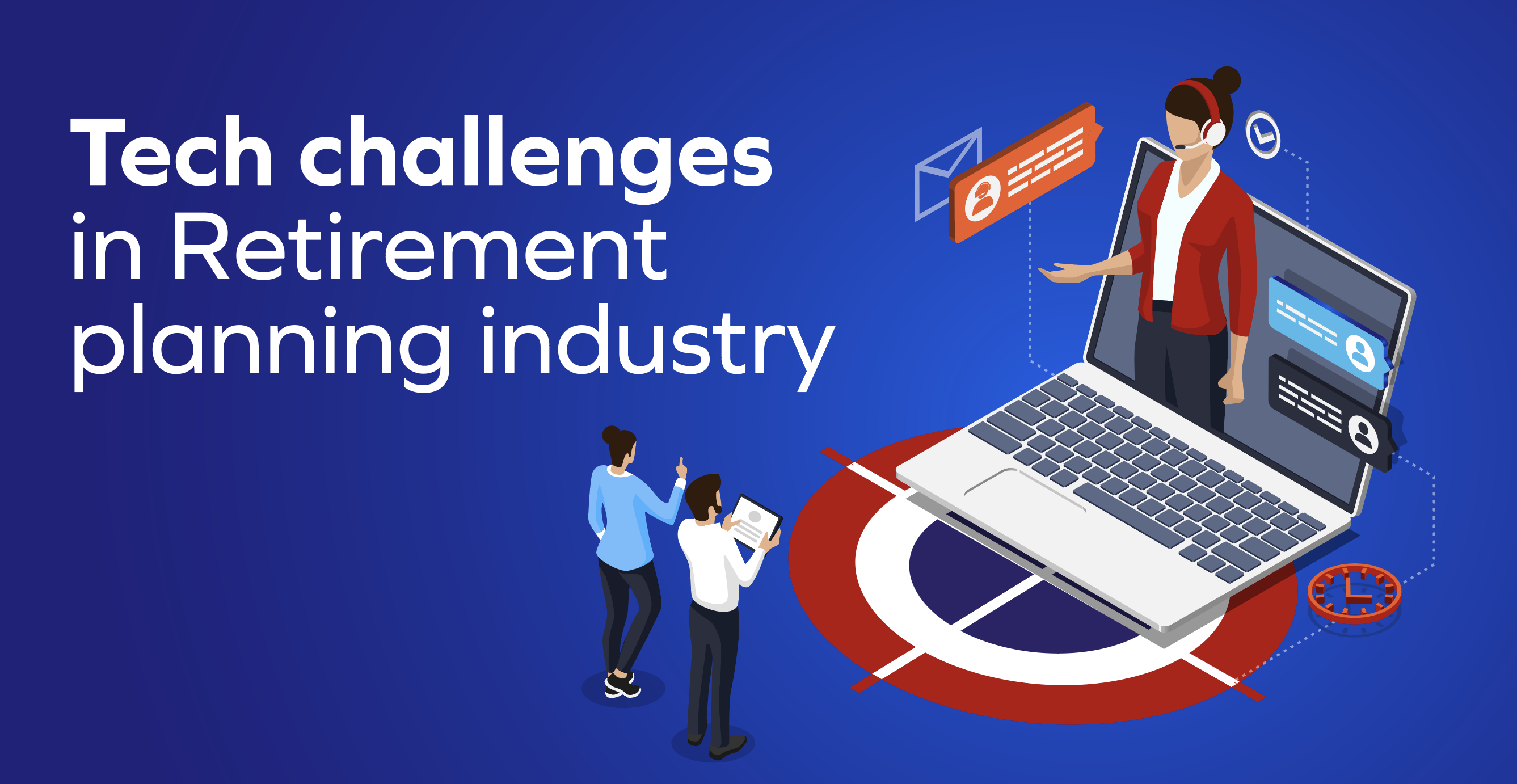
This is the part one of a five-part series on technology trends shaping the retirement plan industry.
Until last year, plan participants needed to sign on physical documents to process their retirement plans! It was only in 2020 — forced by the pandemic — that the Internal Revenue Service (IRS) allowed participants and beneficiaries to remotely sign or have their retirement plan elections notarized. It’s safe to say that the retirement plan industry isn’t a pioneer in technology adoption.
For good reason. An industry that manages the financial stability of the future of a vast majority of Americans needs to be cautious. The challenges service providers face are unique and complex. In a recent Congruent webinar, we brought together experts from across the industry to discuss how technology can help.
Michelle Steele, VP of Customer Experience at OneAmerica; Jamie McInnes, President and CEO of Oculus Partners; Anu Mandava, Head of Architecture at CUNA Mutual Group and Chandrasekaran Vaidyanathan (VC), co-founder and head of strategy at Congruent participated in the webinar.
In part one of this five-part series, we explore the key challenges faced by service providers and what they’re seeking from technology.
#1 Regulatory implications
The Employee Retirement Income Security Act of 1974 (ERISA), Setting Every Community Up For Retirement Enhancement Act of 2019, regulations of the Pension Benefit Guaranty Corporation (PBGC), several state-level laws and rules govern the retirement plan industry.
Every technology adoption needs to accommodate not just industry-specific laws but also data and customer information-related compliance.
#2 Mounting costs
Many in the retirement plan industry still use legacy tech-stack and outdated processes that are leading to increasing real and opportunity costs. The use and maintenance of legacy technology can be expensive. On the other hand, legacy systems also hinder service providers from leveraging data, automating processes, personalizing offerings etc.
As Jamie McInnes of Oculus Partners says, “Service providers are hopeful that technology will enable them to drive the costs down and make it economically meaningful for them to stay in the business.”
#3 Increasing customer expectations
Millennial customers — who are used to seamless omnichannel experiences with everyday brands like Amazon, Disney, Starbucks etc. — expect the same of every industry. As VC of Congruent points out, “the usability grammar itself has changed among customers.”
They expect retirement planning to offer intuitive services that connect with them proactively. “In response to these needs, digital transformation can play a key role in giving us a different view of our customers, their needs and wants, helping us create personalized and differentiating products,” says Michele Steele, VP of customer experience at One America.
Retirement solutions providers are looking for technology that can create next level experiences for all customers — participants, plan sponsors, advisors etc.
#4 Cybersecurity risks
“As we create more products, we manage more assets, exposing us to cybersecurity risks,” points out Anu Mandava at CUNA Mutual Group. For any player in the retirement planning industry, property or data theft would mean a loss of trust, which could be devastating.
While considering technology, service providers are looking for robust solutions that are protected from external attacks.
What can retirement plan administrators, sponsors and recordkeepers do?
Here are the areas that our webinar audience identified as key part of their digital transformation strategy.
- Automation
- Cybersecurity
- Artificial intelligence and machine learning
- Blockchain
These technology trends intricately intertwine with each other. For instance, blockchain can play an important role in upholding cybersecurity. AI/ML can optimize automation use cases. In the upcoming editions in this series, we explore each of these technologies in detail. We discuss what they can do for service providers and how you can leverage these technologies to thrive in the post-pandemic future.
